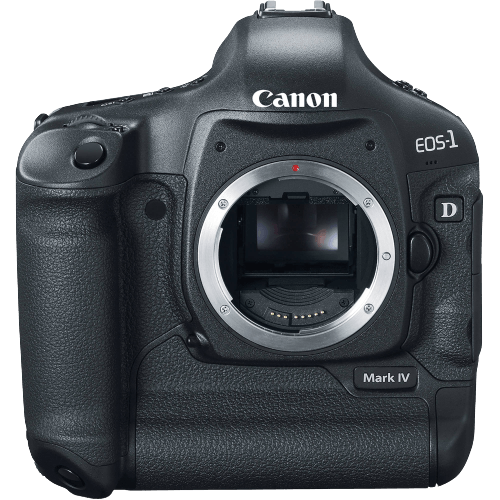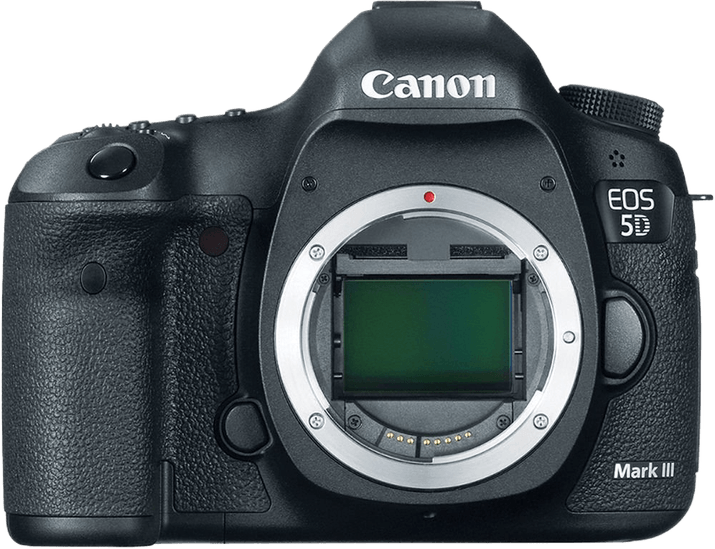Canon EOS 1D Mark IV vs EOS 5D Mark III Comparison
Canon EOS 1D Mark IV

Canon EOS 5D Mark III

The Canon EOS 5D Mark III outperforms the Canon EOS 1D Mark IV with a score of 65/100 compared to 54/100. Both cameras are DSLRs and were released in 2009 and 2012, respectively. They share similarities in their launch prices, with the 1D Mark IV priced at $5,840 and the 5D Mark III at $3,499.
The 5D Mark III has a smaller and lighter body, measuring 152 x 116 x 76mm and weighing 950g. This makes it more portable and convenient for photographers. However, the 1D Mark IV has its own advantages, such as its larger size of 156 x 157 x 80mm and heavier weight of 1,230g, which may provide better stability during shooting.
Taking into account the scores, launch prices, and physical specifications, the Canon EOS 5D Mark III stands as the better choice due to its higher score, lighter weight, and more affordable price. The Canon EOS 1D Mark IV’s larger size and weight can be beneficial for some photographers, but its lower score and higher price make it less appealing overall.
Canon EOS 1D Mark IV vs EOS 5D Mark III Overview and Optics
The Canon EOS 5D Mark III emerges as the winner in the optics comparison, scoring 67 out of 100, while the Canon EOS 1D Mark IV scores 54. Both cameras share some common specifications, including the CMOS sensor type, Canon EF lens mount, and the absence of image stabilization.
The 5D Mark III outperforms the 1D Mark IV in several aspects. It has a higher megapixel count of 22.3, compared to the 16.1 megapixels in the 1D Mark IV. This results in higher resolution images for the 5D Mark III. Additionally, the 5D Mark III boasts a more advanced Digic 5+ processor, which contributes to better image quality and faster processing. The 5D Mark III also has a higher DXOMARK sensor score of 81, indicating better performance in terms of color depth, dynamic range, and low-light capabilities. Furthermore, the 5D Mark III features a full-frame sensor, which allows for a wider field of view and better control over depth of field.
On the other hand, the 1D Mark IV has a faster shooting speed of 10 frames per second, compared to the 5D Mark III’s 6 frames per second. This makes the 1D Mark IV a better choice for capturing fast-moving subjects or action photography. However, the 1D Mark IV’s APS-H sensor size is smaller than the full-frame sensor in the 5D Mark III, which may affect the overall image quality.
Taking these factors into consideration, the Canon EOS 5D Mark III is the superior choice in terms of optics due to its higher resolution, more advanced processor, better sensor performance, and full-frame sensor size. The Canon EOS 1D Mark IV, while offering a faster shooting speed, falls short in other aspects, making it less preferable for those prioritizing image quality.
Canon EOS 1D Mark IV vs EOS 5D Mark III Video Performance
The Canon EOS 5D Mark III outperforms the Canon EOS 1D Mark IV in video capabilities with a score of 56/100, a 13-point lead over the 1D Mark IV’s score of 43/100. Both cameras share some common specifications, including a Full HD maximum video resolution and 1920 x 1080 maximum video dimensions. However, the 5D Mark III has a higher maximum video frame rate and the absence of built-in time-lapse functionality in both models.
The 5D Mark III’s superior video performance is primarily due to its higher maximum video frame rate of 60fps, compared to the 1D Mark IV’s 30fps. This allows the 5D Mark III to capture smoother and more detailed video, particularly in fast-paced or action scenes.
Although the 1D Mark IV has a lower video score, it still provides Full HD video resolution and 1920 x 1080 video dimensions, making it a suitable option for casual videographers or photographers who occasionally shoot video. However, its lower maximum frame rate of 30fps may limit its appeal to professionals or enthusiasts seeking the best possible video quality.
In comparing the video capabilities of these two cameras, the Canon EOS 5D Mark III is the clear winner due to its higher maximum video frame rate. The Canon EOS 1D Mark IV, while not as competitive in video performance, remains a viable choice for those not requiring the highest frame rates.
Canon EOS 1D Mark IV vs EOS 5D Mark III Features and Benefits
The Canon EOS 5D Mark III wins the feature comparison with a score of 59/100, while the Canon EOS 1D Mark IV scores 54/100. Both cameras share several specifications, including the absence of a touchscreen, flip screen, GPS, WiFi, and Bluetooth. Despite these similarities, the 5D Mark III outperforms the 1D Mark IV in specific areas.
The 5D Mark III has a larger screen size of 3.2 inches compared to the 1D Mark IV’s 3-inch screen. A larger screen provides better visibility and ease of use. Additionally, the 5D Mark III has a higher screen resolution of 1,040,000 dots, compared to the 1D Mark IV’s 920,000 dots. The increased resolution offers a clearer and sharper image preview, allowing users to better assess image quality and composition.
The 1D Mark IV does not surpass the 5D Mark III in any features. However, it is important to note that the 1D Mark IV is still a competent camera with a relatively close feature score. The absence of certain features, such as WiFi and Bluetooth, does not render the camera inferior; it simply means that the 5D Mark III has a slight edge in terms of screen size and resolution.
In the end, the Canon EOS 5D Mark III takes the lead in the feature comparison due to its larger screen size and higher resolution. While the Canon EOS 1D Mark IV does not exceed the 5D Mark III in any features, it remains a capable camera with a competitive feature score.
Canon EOS 1D Mark IV vs EOS 5D Mark III Storage and Battery
The Canon EOS 5D Mark III wins in the storage and battery category with a score of 76, while the Canon EOS 1D Mark IV scores 48. Both cameras have no USB charging and accept SD/SDHC memory cards, as well as Compact Flash and UDMA cards.
The 5D Mark III outperforms the 1D Mark IV with two memory card slots, allowing for more storage capacity and the option to use SDXC cards. However, the 1D Mark IV has a longer battery life, lasting for 1500 shots compared to the 5D Mark III’s 950 shots. The 1D Mark IV utilizes the LP-E4 battery, while the 5D Mark III uses the LP-E6 battery.
Despite its lower score, the 1D Mark IV has a notable advantage in battery life. However, the 5D Mark III offers more storage flexibility and overall better performance in this category.
Canon EOS 1D Mark IV vs EOS 5D Mark III – Our Verdict
Are you still undecided about which camera is right for you? Have a look at these popular comparisons that feature the Canon EOS 1D Mark IV or the Canon EOS 5D Mark III:

